Book Review: All Dogs Have ADHD (Updated Version)
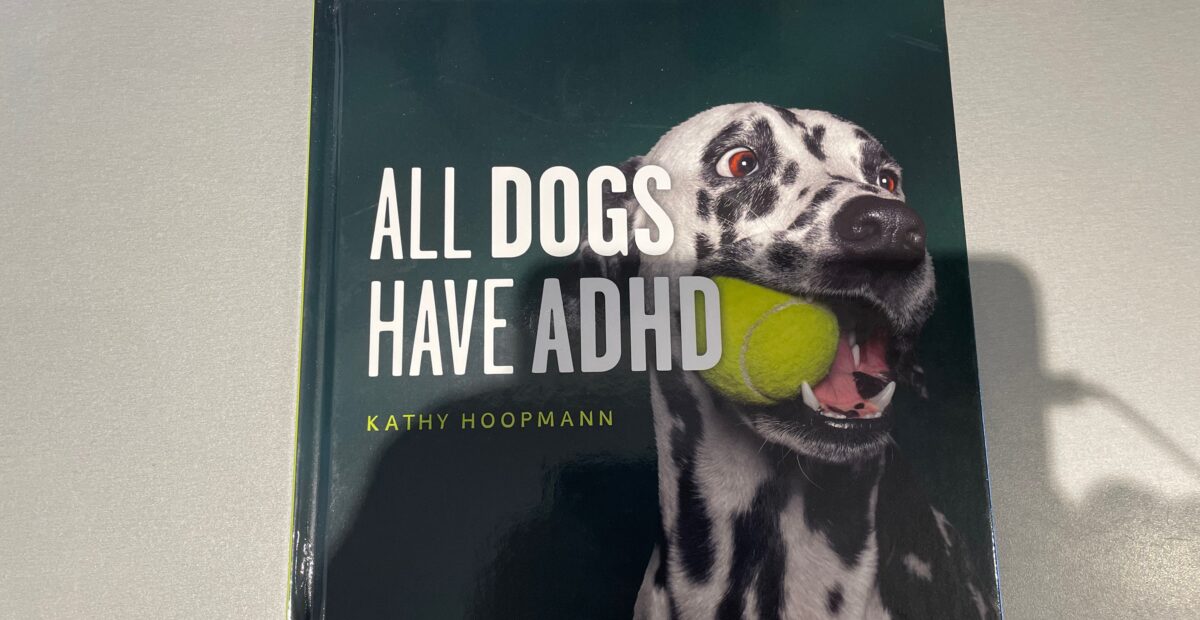
All photography in this post is by April Slocombe.
Introduction
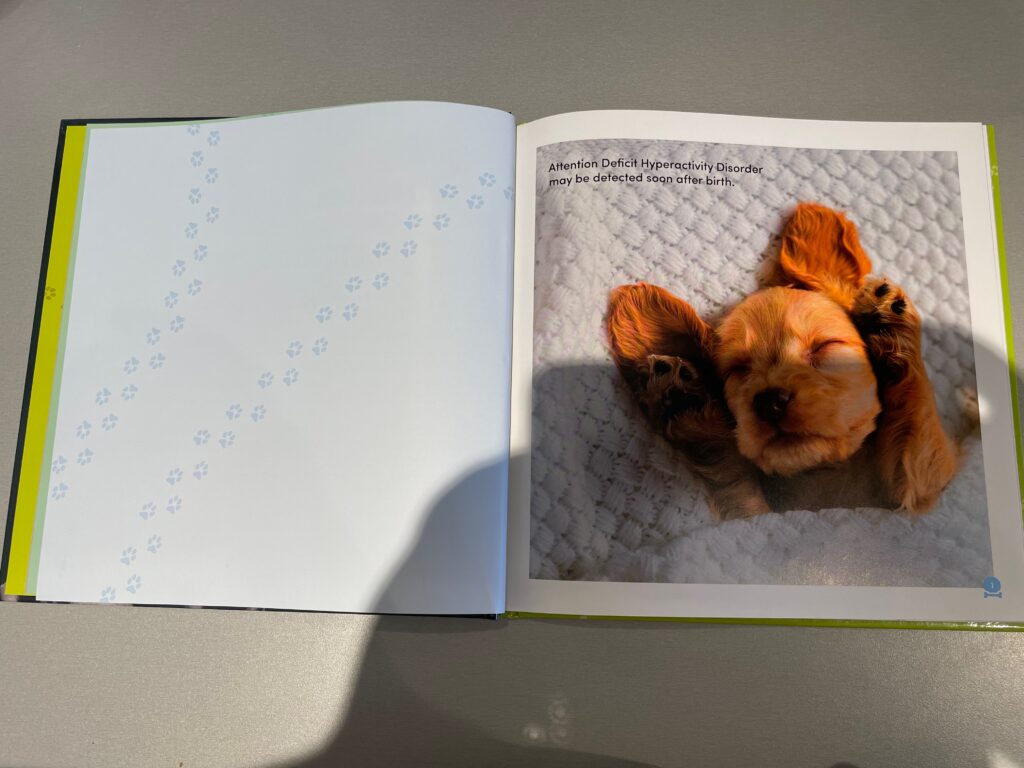
All Dogs Have ADHD (2020) is a book that Kathy Hoopmann wrote. It is an updated version of the book of the same name that was originally published in 2008.
Like its predecessor, Hoopmann wrote the book to educate children and their families about ADHD. The book also uses photographs from Shutterstock.co.uk.
The introduction states that “Children on the Attention Deficit Hyperactivity Disorder (ADHD) Spectrum can have challenges in three main areas:”
- Finding it hard to keep focused.
- Being hyperactive.
- Impulsivity
Although the introduction states that “anyone can find it hard to focus, or can be hyperactive or impulsive occasionally,” “ADHD is only used when these traits are exhibited so often that lives are disrupted.”
The introduction stresses that ‘not every child with ADHD has all the traits” the book mentions. Some children with ADHD are active, whereas some of them are not. While some children with ADHD can be outgoing, others may be very shy.
Even though children with ADHD are different, they all need “understanding and love.” They might also need specialist help such as “medication and behaviour management.”
The introduction concludes that “children with ADHD need people who believe in them, people to build their self-esteem, and people to go on life’s journey with them, wherever it may lead.”
After the introduction, the book states that ADHD “may be detected soon after birth.” According to the NHS, most cases of ADHD are diagnosed in children aged 3 – 7; however, it is sometimes diagnosed later in childhood.
What kinds of ADHD traits does the book mention?
Psychological and Sensory
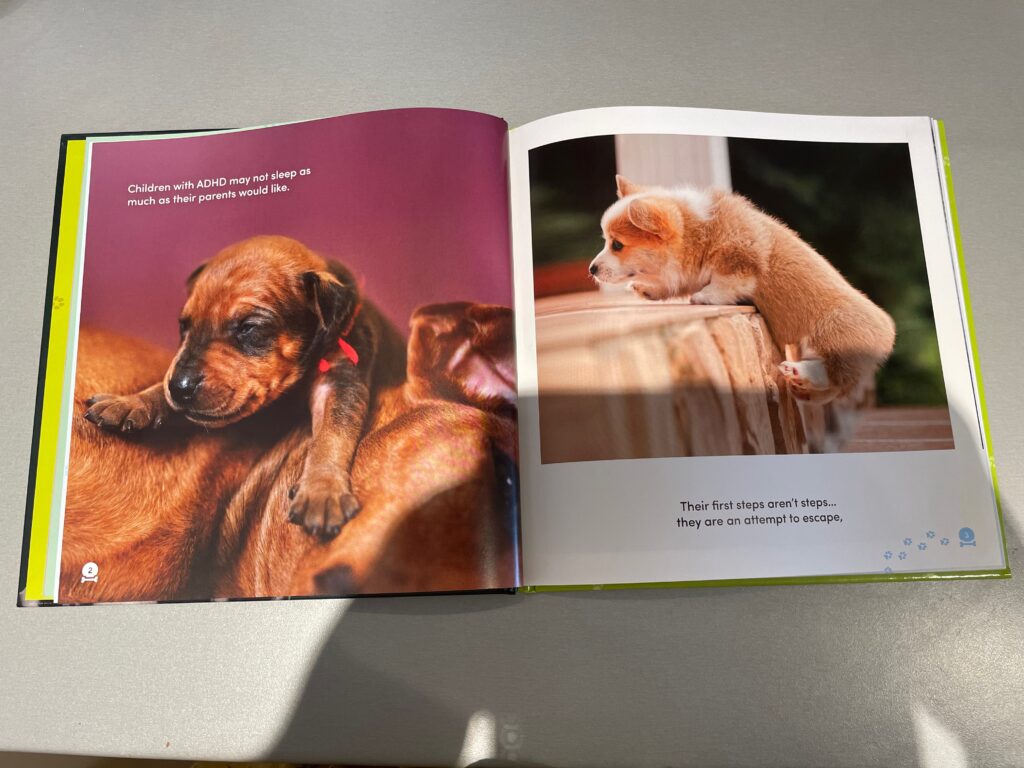
- Not sleeping “as much as their parents would like.”
- Knowing what they want and wanting it in the present moment.
- Diving straight into a situation “without thinking through the consequences.”
- Being fearless.
- Not behaving roughly on purpose and often feeling bad about it later.
- Being distracted by things other people don’t notice.
- Their minds working better when their bodies are in motion.
- Getting bored easily.
- Their brains fogging and their eyes closing all by themselves.
- Finding an alternative place more interesting.
- Dreaming of “escaping to better things.”
- Dashing “from one task to the next without finishing anything.”
- Not knowing where to start.
- Not knowing how to follow instructions.
- Their brains not always knowing “how to retrieve the knowledge” they have just learnt.
- Some people not appreciating “their type of intelligence.”
- Their senses getting overloaded.
- Sometimes feeling sad because they are very sensitive and finding it hard to fit in with others.
- Having a meltdown when things get too much.
Physical
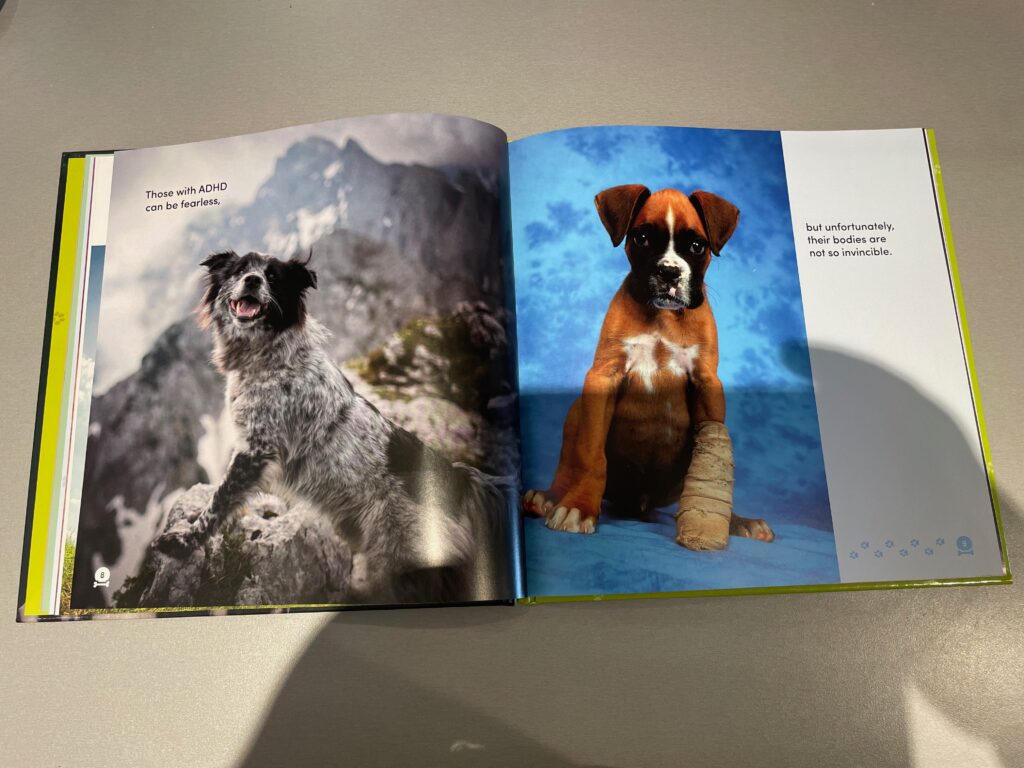
- Their first steps being “an attempt to escape” rather than first steps that non-ADHD children experience.
- Having a strong desire to explore the world.
- Their bodies not being invincible.
- Behaving roughly at times.
- Finding it hard to “sit still for long.”
Social
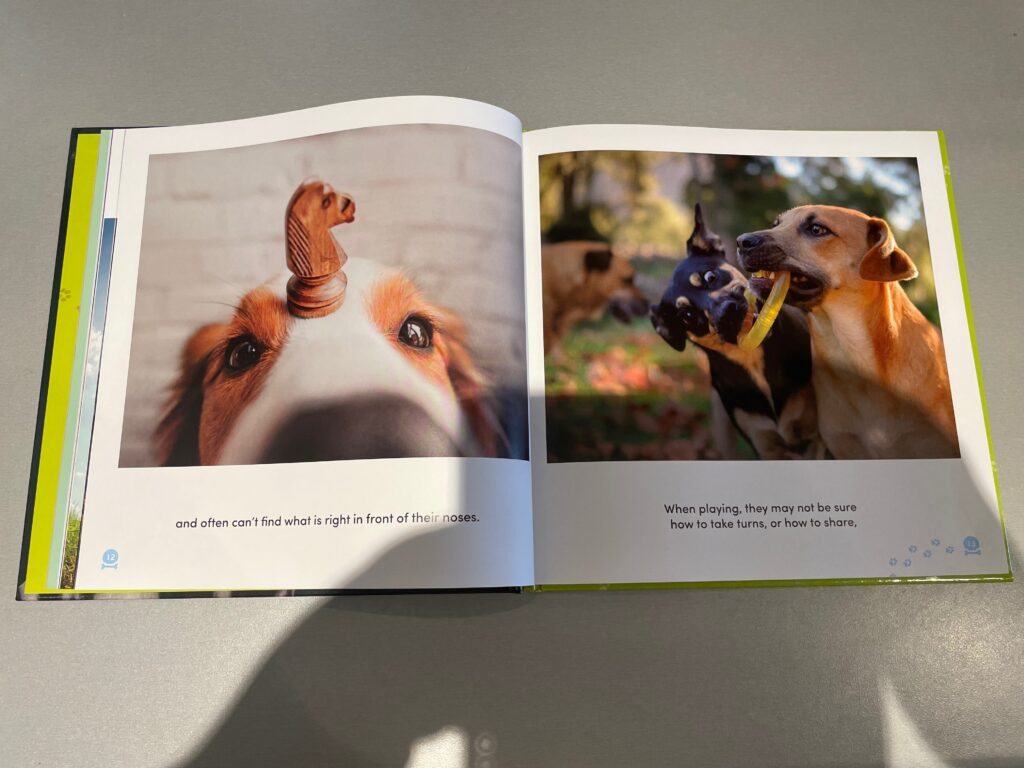
- Not knowing how to take turns or share when playing.
- Those in charge not always being impressed with their behaviour.
- Others often labelling children with ADHD as clowns.
- Not noticing when time passes.
- Ending up “in the doghouse” without knowing why.
Other Traits
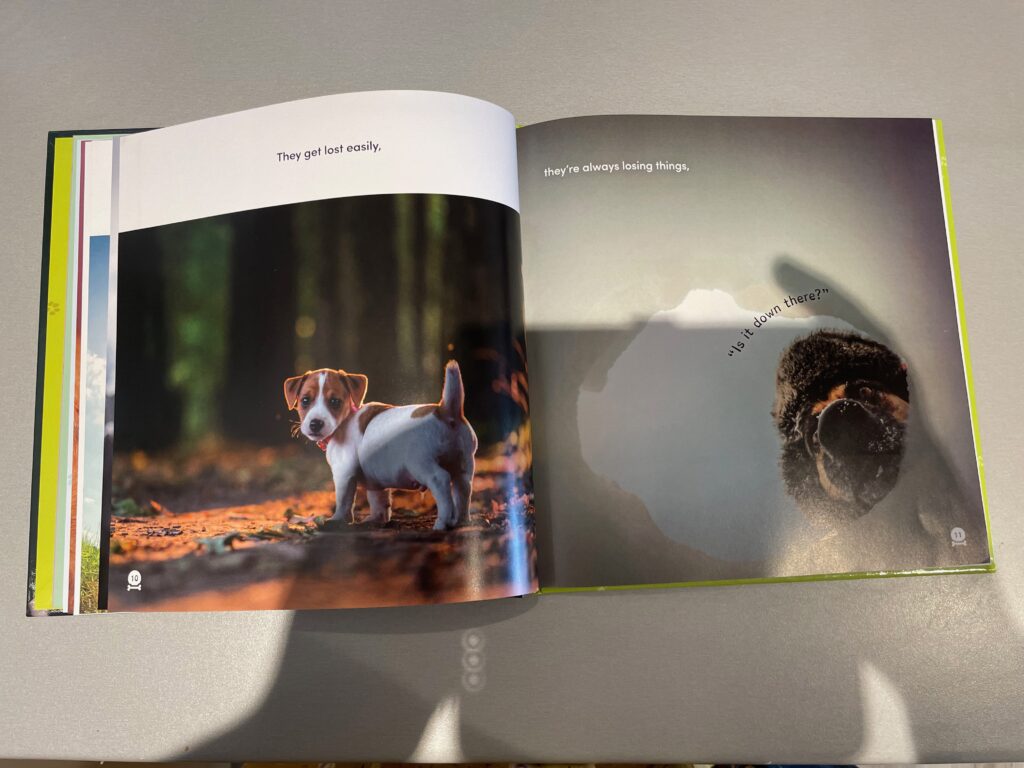
- Going for an opportunity when it presents itself.
- Being fearless.
- Getting lost easily.
- Always losing things.
- Not being able to find “what is right in front of their noses.”
- Their priorities differing from those around them.
- Someone in their family behaving in the same way as they do.
What strengths of ADHD does the book mention?
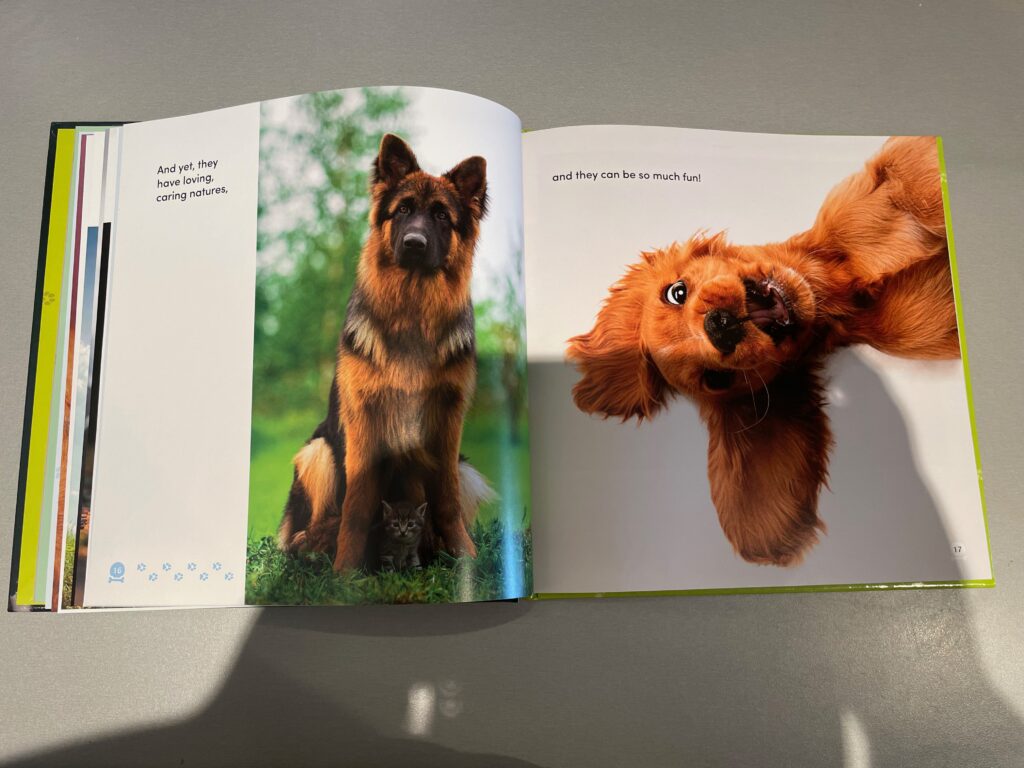
- Having lovely, caring natures.
- Being so much fun.
- Parents loving their children with ADHD despite not always understanding them.
- Having fierce concentration on something they like.
- Having wholehearted dedication to a task they enjoy.
- Their minds working differently from those of their peers.
- Seeing the “big picture” easily.
- Finding solutions “where others don’t think to look.”
- Having legendary creativity.
- Children with ADHD being able to do anything they want as they grow older.
- Always being willing to try new things.
- Knowing it’s time for a change “when life seems the same, day after day.”
- Having the potential to “reach the very top of their chosen field” if they engage in a job they enjoy.
- Being intelligent.
What well-known people were believed to have had ADHD?
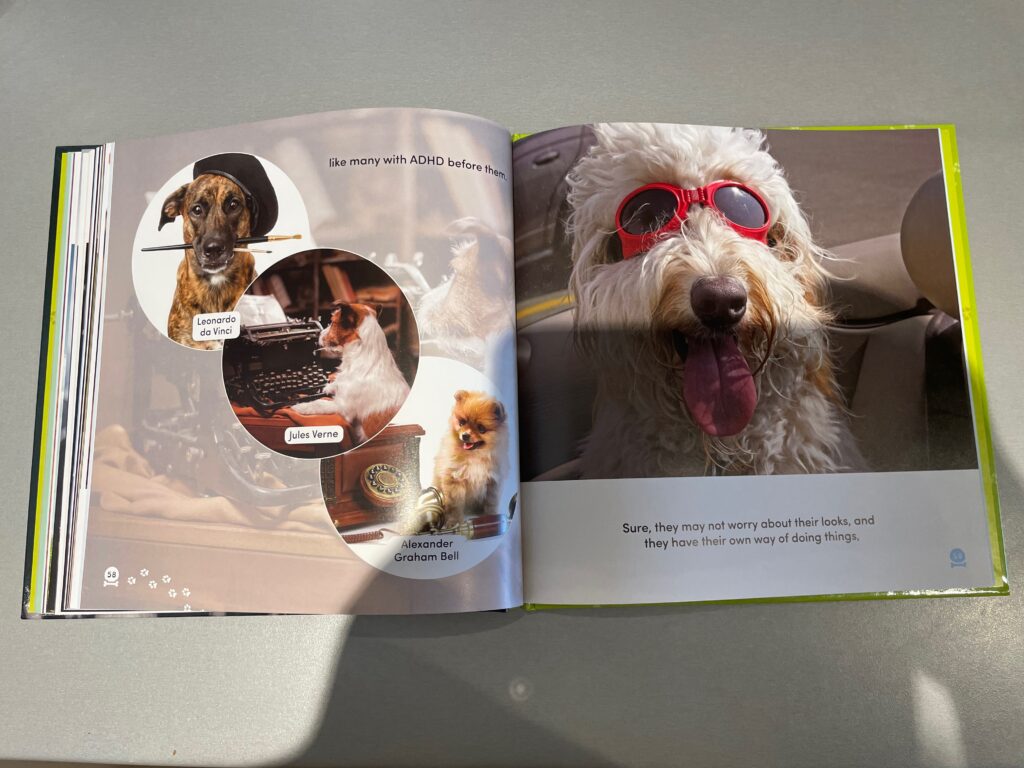
The book mentions that Leonardo Da Vinci, Jules Verne and Alexander Graham Bell were all believed to have had ADHD.
Conclusion
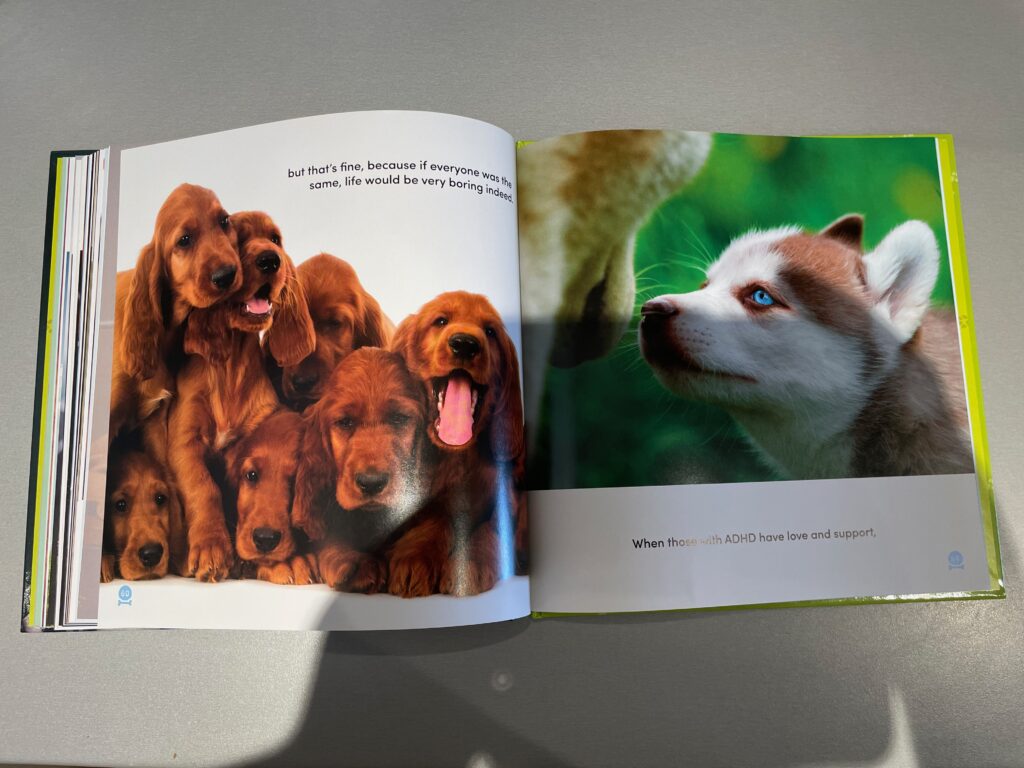
The conclusion states that children with ADHD “may not worry about their looks, and they have their own way of doing things.” It also states that “if everyone was the same, life would be very boring indeed.”
The book ends with the assertive sentence, “When those with ADHD have love and support, good friends who accept them just the way they are, encouragement to pursue their dreams, and someone to believe in them, their potential is limitless!”
After the conclusion is a list of dog breeds and the photography credits.
Final Verdict
While the content throughout is like that in the original book, it uses gender-neutral pronouns rather than male ones to make it more inclusive. The updated version of the book uses different photographs from those in the original print, which makes it more unique.




